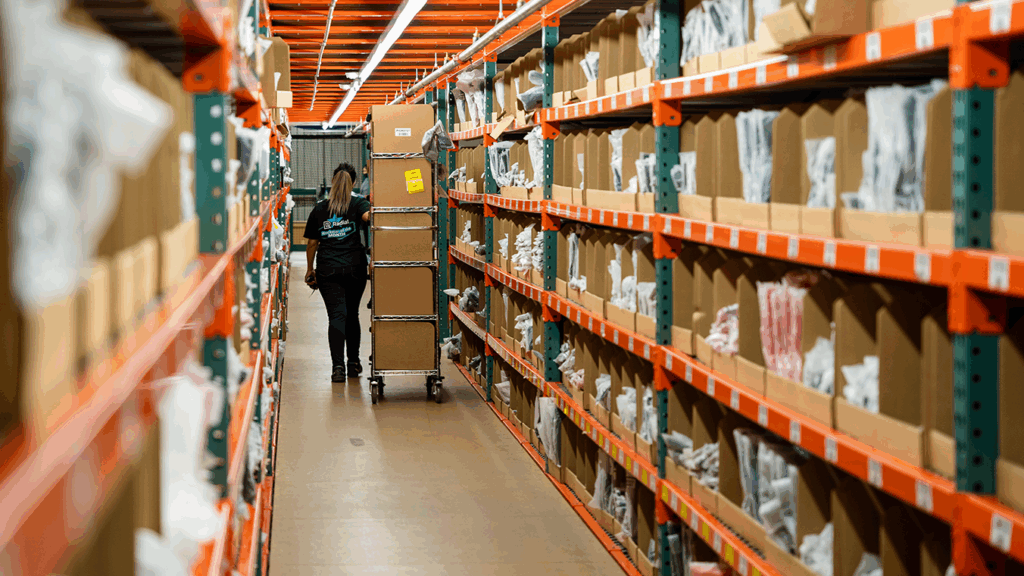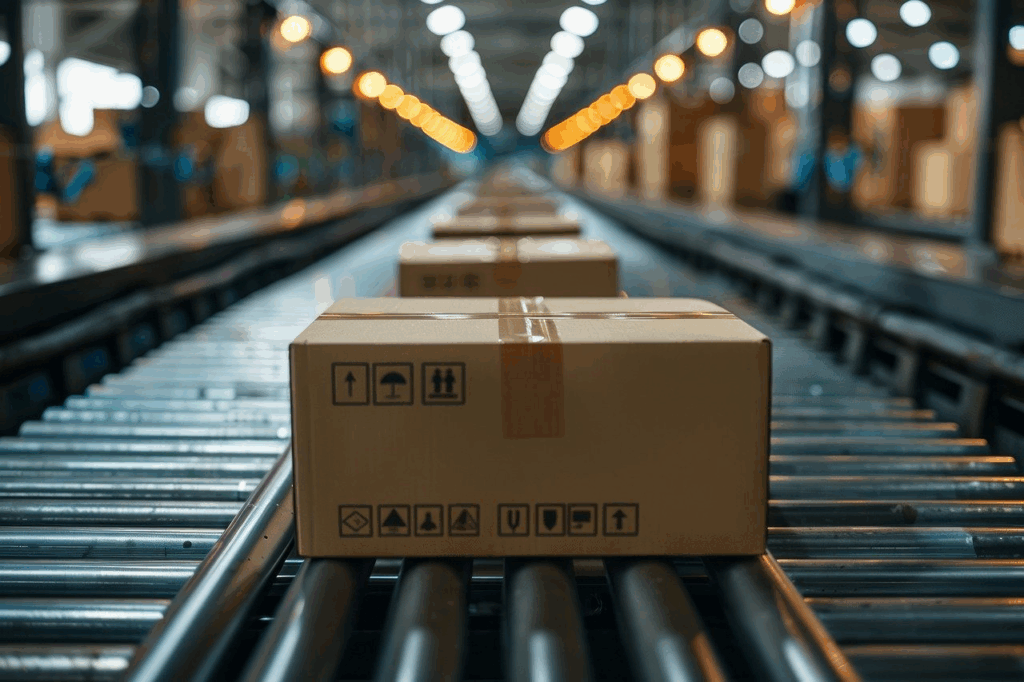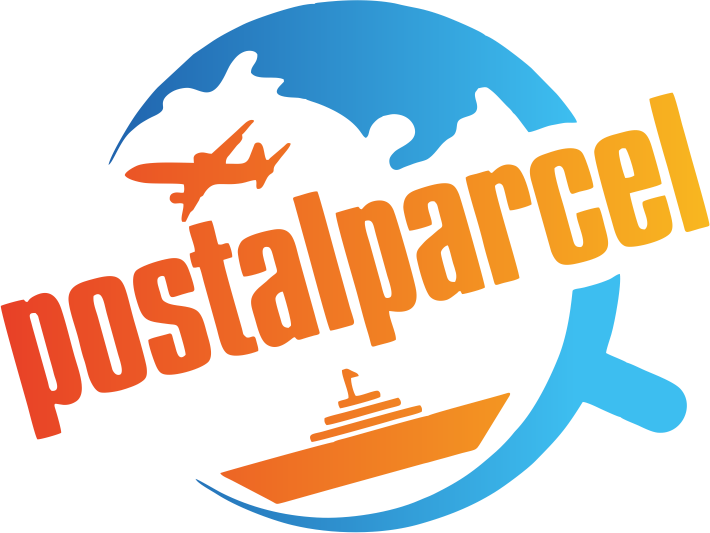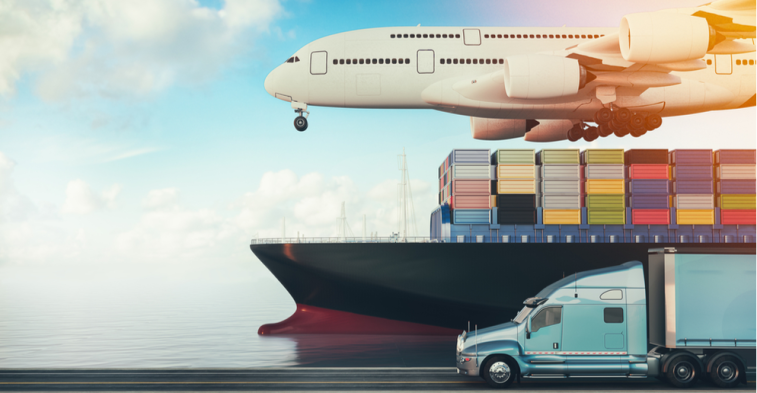Los mejores servicios de cumplimiento transfronterizo para vendedores de comercio electrónico de EE.UU. a la UE
Mejor Cumplimiento transfronterizo Los servicios son ahora esenciales para los vendedores de comercio electrónico de EE.UU. a la UE que quieran crecer sin problemas en los mercados internacionales. Vender a clientes europeos ofrece enormes oportunidades, pero también conlleva retos como el despacho de aduanas, los plazos de entrega, el cumplimiento de las obligaciones fiscales y las expectativas de los clientes. El socio de distribución adecuado puede marcar la diferencia entre compradores satisfechos que repiten y retrasos costosos.
Este artículo explora los principales servicios de cumplimiento transfronterizo, explica qué características son las más importantes y destaca cómo los vendedores estadounidenses de comercio electrónico pueden optimizar su estrategia logística cuando se dirigen a la Unión Europea.

Por qué el cumplimiento transfronterizo es importante para los vendedores de EE.UU. a la UE
Aumento de la demanda en los mercados europeos
Europa alberga a más de 450 millones de clientes potenciales. Las ventas de comercio electrónico en la UE siguen creciendo, con una fuerte demanda en países como Alemania, Francia, España y los Países Bajos. Los vendedores de la UE que pueden ofrecer entregas rápidas y fiables obtienen una ventaja competitiva.
Expectativas de los clientes en la UE
Los compradores europeos esperan:
- Seguimiento transparente de EE.UU. a sus puertas
- Impuestos y aranceles claros en la caja
- Plazos de entrega más cortos y previsibles
- Opciones de devolución localizadas
No cumplir estas expectativas suele provocar el abandono de carritos y una menor fidelidad de los clientes.
Características principales de los mejores servicios de cumplimiento transfronterizo
Visibilidad integral con una plataforma logística global
Top servicios de cumplimiento proporcionan un seguimiento que cubre todas las etapas, incluidos los controles aduaneros y las entregas locales.
Actualizaciones de la entrega predictiva
Las plataformas avanzadas utilizan IA para calcular plazos de entrega realistas. Esto reduce la frustración cuando se producen retrasos inesperados.
Gestión de aduanas e IVA
La normativa de la UE puede ser compleja. Los mejores servicios gestionan el papeleo, calculan el IVA en la caja y evitan que los envíos se queden atascados en la aduana.
Soluciones locales de devolución
Los clientes europeos valoran las devoluciones fáciles. Los servicios que ofrecen centros de devolución en la UE generan confianza y mejoran la reputación de la marca.
Comparación de los principales servicios de cumplimiento transfronterizo

1. Soluciones de comercio electrónico de DHL
Puntos fuertes
- Sólida red de EE.UU. a la UE con plazos de entrega fiables
- Eventos de seguimiento detallados y asistencia aduanera
- Adecuado para vendedores medianos y grandes
Puntos débiles
- Precios superiores a los de proveedores más pequeños
- Menos flexibilidad para los pequeños vendedores
2. FedEx Cross Border
Puntos fuertes
- Completas herramientas de gestión aduanera y cálculo de derechos
- Actualizaciones predictivas de entrega para envíos internacionales
- Amplia red en los principales países de la UE
Puntos débiles
- Las tarifas de envío pueden ser más elevadas para los paquetes ligeros
- Opciones limitadas de devolución local en algunas regiones
3. UPS Worldwide Fulfillment

Puntos fuertes
- Seguimiento en tiempo real desde la recogida hasta la entrega final
- Fuerte integración con los sistemas aduaneros
- Centros logísticos europeos bien establecidos
Puntos débiles
- El sistema de seguimiento es sólido pero menos fácil de usar
- Los plazos de entrega pueden ser más lentos en destinos rurales de la UE
4. USPS Internacional + Redes postales de la UE
Puntos fuertes
- Solución asequible para pequeños vendedores
- Amplio alcance gracias a la colaboración con los servicios postales de la UE
Puntos débiles
- Actualizaciones predictivas de entrega limitadas
- Plazos de entrega más largos que los de los transportistas privados
5. PostalParcel Plataforma de cumplimiento
Puntos fuertes
- Creado para vendedores de comercio electrónico que se expanden por todo el mundo
- Combina varios transportistas en un panel de control fácil de usar
- Seguimiento internacional en tiempo real con actualizaciones de entrega predictivas
- Automatización de las aduanas y del pago del IVA
- Servicios flexibles de devolución local en toda la UE
Puntos débiles
- Al tratarse de una plataforma de nueva generación, es posible que los usuarios que la utilicen por primera vez deban estar familiarizados con ella.
- Menos reconocimiento de marca que DHL o FedEx
Cómo destaca PostalParcel para los vendedores de EE.UU. a la UE

Integración multicarrier
A diferencia de las soluciones de un solo transportista, PostalParcel ofrece a los vendedores la libertad de utilizar varios socios de envío sin dejar de ofrecer un seguimiento unificado.
Actualizaciones de la entrega predictiva
Su sistema proporciona ETA inteligentes analizando el historial de despachos de aduanas, el rendimiento del transportista y los patrones de entrega locales.
Devoluciones locales simplificadas
PostalParcel admite direcciones de devolución dentro de la UE, lo que reduce las molestias de enviar artículos de vuelta al otro lado del Atlántico.
Sin fisuras Comercio electrónico Integración
Los plugins directos para las principales plataformas como Shopify, WooCommerce y Magento permiten a los vendedores vincular los pedidos automáticamente.
Consejos prácticos para los vendedores estadounidenses que acceden a los mercados de la UE
Optimizar la documentación aduanera
Los formularios incompletos o inexactos provocan retrasos. Automatizar las declaraciones de aduana con una plataforma de cumplimiento evita la mayoría de los problemas. Además, los vendedores deben conservar copias digitales de las facturas y los detalles de los productos listas para los controles aduaneros. Disponer de códigos SA precisos y descripciones claras de los productos acelera el despacho y reduce la posibilidad de inspecciones adicionales.
Mostrar aranceles e impuestos en la caja
Los costes ocultos en la entrega frustran a los compradores europeos. Utilice servicios que calculen el IVA y los derechos de importación por adelantado. Esto hace que la experiencia de compra sea transparente y genera confianza. Es más probable que los compradores completen su compra si conocen el coste total exacto, y las empresas evitan disputas sobre el pago más adelante.
Ofrezca múltiples opciones de entrega

Algunos clientes prefieren un envío exprés rápido, mientras que otros quieren un envío económico de bajo coste. Las plataformas de cumplimiento flexibles admiten ambas opciones. Ofrecer opciones ayuda a captar a un público más amplio, ya que los compradores preocupados por el presupuesto siguen queriendo entregas fiables, mientras que los clientes premium exigen rapidez.
Generar confianza local con las devoluciones
Facilite direcciones de devolución en la UE y políticas de devolución claras. Este sencillo paso aumenta considerablemente la confianza de los clientes. Si los clientes saben que pueden devolver fácilmente un producto sin enviarlo al extranjero, se sienten más cómodos comprando en una tienda estadounidense.
Los retos del cumplimiento de EE.UU. con la UE
Complejidad aduanera
Cada Estado miembro de la UE sigue una normativa común, pero su aplicación puede diferir. Sin el apoyo adecuado, los envíos pueden sufrir retrasos inesperados.
Cumplimiento del IVA y de las normas IOSS
En Ventanilla Única de Importación (VUI) exige a los vendedores que recauden el IVA en los pedidos inferiores a 150 euros. Los servicios de distribución que integran los informes IOSS ayudan a los vendedores a cumplir la normativa.
Variaciones de la entrega en la última milla
La velocidad de entrega final varía de un país a otro. Un buen socio de distribución se coordina con transportistas locales fiables para evitar lagunas en el seguimiento.
El futuro del cumplimiento transfronterizo entre EE.UU. y la UE

Actualizaciones de la entrega predictiva basada en IA
Más plataformas se basarán en la IA para calcular los plazos de entrega con gran precisión, reduciendo las consultas al servicio de atención al cliente.
Opciones de envío más ecológicas
La sostenibilidad es importante para los compradores europeos. Se esperan más opciones de entrega respetuosas con el medio ambiente, como el envío neutro en carbono.
Almacenamiento flexible
Algunos servicios de distribución están añadiendo microalmacenes en la UE. Esto permite a los vendedores prealmacenar artículos más cerca de sus clientes y acortar los plazos de entrega.
Conclusión
Los mejores servicios de cumplimiento transfronterizo para vendedores de comercio electrónico de EE.UU. a la UE ofrecen algo más que el envío: gestionan las aduanas, el IVA, el seguimiento y las devoluciones. DHL, FedEx, UPS y USPS siguen siendo populares, pero su flexibilidad o sus actualizaciones predictivas son limitadas.
PostalParcel ofrece una alternativa moderna con integración de múltiples transportistas, seguimiento en tiempo real, actualizaciones de entrega predictivas y soluciones de devolución localizadas. Para los vendedores estadounidenses que quieran triunfar en el mercado europeo, elegir un socio de distribución que combine tecnología, cumplimiento y experiencia del cliente es la clave de un crecimiento sostenible.
Perspectivas del sector
noticias vía inbox
Nulla turp dis cursus. Integer liberos euismod pretium faucibua








